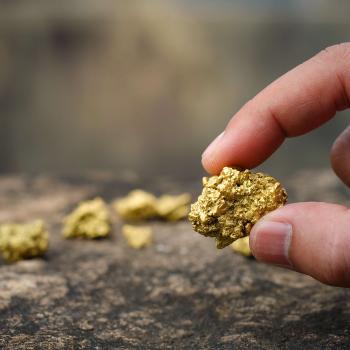Gold was discovered in California in 1848.

Event Description
James Marshall discovered gold on January 24, 1848, at Sutter's Mill, beginning the California Gold Rush. The New Jersey carpenter was working at John Sutter's Sacramento River settlement when he found the nugget. The discovery lured more than 90,000 people to California in the two years following his find and more than 300,000 people by 1854. James Marshall died penniless in 1885.
Classroom Activity
Extend your study of historical fiction and/or the Gold Rush by inviting your students to read some Gold Rush Letters, written to people in Missouri by Gold Rush miners, or some of the excerpts from letters and other writings by visitors to and residents of the Gold Rush area in California. Ask students to think about the following questions as they read and discuss the letters:
- What new information did you learn by reading these documents?
- How were the people in the letters different from what you'd imagined?
- How much do the letters talk about gold? What else is discussed?
After they've explored the letters, ask your students to imagine they were alive during the Gold Rush and had traveled to the area. Have each student write a letter to a family member about his or her imaginary experience using the interactive ReadWriteThink Letter Generator. Have students extend their work by using their letters to start creating a work of historical fiction. More tips are available for the Letter Generator.
Websites
Investigate the art, artifacts, and people who were affected by the Gold Rush at this site from the Oakland Museum of California, which boasts primary documents and curricular materials.
This companion site to the PBS film The Gold Rush includes a transcript of the film, along with a variety of related resources. The site includes maps, a timeline, book lists, a teacher's guide to the film, and other resources.
This collection includes reports from witnesses to the Gold Rush, including John Sutter himself, plus stories from pioneer women, newspaper stories, and additional historical information.
This site from PBS Kids offers information about the Gold Rush, written for kids, as well as an interview with a Gold Rush expert and interactive activities.